UFS Explorer Review – A Powerful Recovery Tool With Lots to Offer
Out of 5 Total Score
No. 2 Among all Windows solutions
UFS Explorer prides itself as a top-tier data recovery solution catering not only to tech specialists but also to everyday users. A key question, however, is whether it strikes the right balance between delivering advanced recovery features while maintaining accessibility for beginners. Find out in this UFS Explorer review.
UFS Explorer for Windows – GalleryMain Pros and Cons of UFS Explorer for Windows
PROS
CONS
Other Options Besides UFS Explorer for Windows
UFS Explorer for Windows Summary
UFS Explorer is equipped with the recovery features necessary to tackle a range of data loss scenarios, making it a very versatile recovery solution. At an affordable price point, users gain access to a comprehensive recovery toolkit that offers quick scan speeds and access to advanced settings for experts. In terms of recovery, it performed consistently well across all tested file systems and demonstrated a commendable ability to recover data by file signature alone. Additionally, the software has the ability to rebuild broken RAID arrays and has some good options for helping you recover data from a computer that no longer has a functional operating system.
In terms of usability, it may pose a challenge for novice users who are introduced to the software without prior familiarity, as the user interface is quite technical. Furthermore, finding the data you want to recover can be difficult due to the lack of filtering options and view modes, especially if you need to search through large amounts of data.
Prospective users can download the program for free to give it a trial run to see if it suits their needs. The free trial allows you to scan your drive and preview the data that it finds. Files below 256 KB can be recovered for free, but anything more will require a paid license.
| Title | Result |
| Compatibility | Good |
| Recovery Rate | Excellent |
| Usability | Good |
| File Type Support | Good |
| Scan Speed | Superb |
| Free Trial | Yes |
| Starting Price | $24.95 / Lifetime |
| Money-Back Guarantee | Yes |
What Is UFS Explorer for Windows?
#UFS Explorer is a suite of data recovery software designed to recover lost or inaccessible files from various storage devices and file systems.
Before we do a deep dive into everything the software has to offer, let’s start with some basic information about the software and the company behind it.
UFS Explorer for Windows Factsheet
| Requirements | Windows XP-11 |
| Latest version | 10.5 • Released 18th Mar, 2024 |
| Download size | 18 MB |
| Category | Data Recovery Software |
| UI languages | English, German, Portuguese, Spanish, Ukrainian |
How Much Does UFS Explorer for Windows Cost?
| Distributed as | Freemium Some features are provided free of charge, but money is required to unlock the rest |
| Trial version available | Trial version available |
| Trial version limitations | There are file size and the Save function limitations in the trial version:
|
| Paid plans |
|
| Price range | $24.95...$1049.95 |
| License model | Lifetime |
| No credit card to try | No credit card to try |
| Money back guarantee | Money back guarantee |
The trial version of UFS Explorer can be downloaded for free, which lets you scan your drive and recover any data below 256 KB. In terms of licenses, you have a few options based on what you want to get out of the software. UFS Explorer Standard will give you the most basic access to its recovery features for $64.95. All licenses above this will give you access to more features, such as recovery from RAID storage, network recovery, and support for more technologies.
All licenses are perpetual, so you won’t need to keep reaching into your wallet every month or year. You also have the option of getting a refund, provided all refund conditions are met.
All UFS Explorer for Windows Pricing Options
| 1 | Personal License | $24.95 |
| 2 | Business License | $69.95 |
| 3 | Details |
|
| 1 | Personal License | $64.95 |
| 2 | Commercial license | $129.95 |
| 3 | Corporate license | $189.95 |
| 4 | Details | Everything in UFS Explorer Standard Access plus:
|
| 1 | Personal License | $139.95 |
| 2 | Commercial license | $229.95 |
| 3 | Corporate license | $419.95 |
| 4 | Details | Everything in UFS Explorer Standard Recovery plus:
|
| 1 | Personal License | $209.95 |
| 2 | Commercial license | $484.95 |
| 3 | Corporate license | $839.95 |
| 4 | Details | Everything in UFS Explorer RAID Recovery plus:
|
| 1 | Commercial license | $629.95 |
| 2 | Corporate license | $1049.95 |
| 3 | Details | Everything in UFS Explorer Network RAID plus:
|
Discounts and coupons
| Discount | Description | Link |
|---|---|---|
| -15% | Save 15% OFF on UFS Explorer Professional Recovery for Windows Don’t let any opportunity of saving money slip away, get 15% Off on UFS Explorer Professional Recovery for Windows – Corporate License (1 year of updates). Enter code BMC-SAVE15 at checkout for the discount. | Get the Deal |
Developer — SysDev Laboratories LLC
UFS Explorer was developed by SysDev Laboratories, LLC. The company is based in Kyiv, Ukraine, and has been producing software in the data recovery space since 2004.
1% 18.4% than avg
690 74.6% than avg
Based on the number of brand-related search queries on Google US according to ahrefs.com.
The company started out under the name SysDevSoftware PE, only taking on the name SysDev Laboratories, LLC in 2008. The company itself may not be well-known by name, but UFS Explorer has garnered a good reputation over the years with many users relying on it as their go-to recovery solution.
| Developer website | ufsexplorer.com |
| Support email | info@sysdevlabs.com |
| Founded | 2004 • 20 years on the market |
| HQ location | 28V Druzhby Narodiv Blvd, Kyiv, 01103, Ukraine |
| Social media | LinkedIn Twitter Facebook YouTube |
The company has a presence on LinkedIn, Twitter, Facebook, and YouTube where it posts fairly regularly. The only channel of support it offers is through a contact form found on the company’s main website.
How to Use UFS Explorer for Windows
Tested on: Windows 11 (version 23H2)
Now that you have a basic understanding of the software and its developers, we’ve prepared a basic set of instructions that detail what the recovery process looks like with UFS Explorer.
Installation
After opening the installer, you're immediately asked to choose which language you'd like to use. Following that, you will need to accept the UFS Explorer EULA and choose where you want to install the software.
Overall, the installation is fairly standard. The installer is relatively small at roughly 18.6 MB, and the application is even smaller once installed, only taking up 14.6 MB of disk space.
Source selection
Once you open the application, you'll be met with the source selection screen. The application will display your connected storage devices, along with some information pertaining to each.
In terms of selecting what you'd like to scan, you can choose between scanning the entire disk or just a specific partition. The user interface is full of information that can make it seem very crowded, so ensure you're choosing the right disk before starting your scan.
Scanning process
The scanning process is very technical. Before starting the scan, you will be met with screens that let you choose what part of the disk you want to scan, what file systems to search for, and whether you want to utilize its signature-based scanner (IntelliRAW).
Proceeding with the default options will be fine in most cases, so if you're unsure, just keep pressing next until you can click Start scan.
Managing found files
Once the scan is finished, you'll have the option of exploring the scan results in a tree view. Unfortunately, there are no other view modes you can use, nor is there any option to filter the results. You can, however, use the search box to find files by name. And, clicking on a file will display a small preview of it.
To select the files you wish to recover, hold CTRL and click on each one.
Recovery and post-processing
With all of your files selected, you can begin recovery by clicking on the Save selection button (denoted by a floppy disk). You will then need to choose where you want to store the selected files, then click Select.
The trial version of UFS Explorer will only let you recover files below 256 KB in size. To recover anything larger, you will need to purchase a license.
Is UFS Explorer for Windows Safe?
87%
Avg score UFS Explorer is safe and trustworthy
The software does not contain any malware.
The program collects minimal information.
It does a good job at recovering your data intact.
SysDev Laboratories, LLC is a trustworthy company.
Our analysis of UFS Explorer's safety and trustworthiness returned good results. After an extensive malware scan, the software came back clean. As mentioned in the company's privacy policy, some information is collected but only used for internal purposes, excluding exceptional circumstances such as if the company was to be sold or if it was required to comply with a lawful court order. Although the software does not incorporate non-intrusive scanning algorithms, it did a really good job of recovering our data in a usable state. SysDev Laboratories, LLC is a trusted company with a range of useful software tools.
UFS Explorer for Windows - Full Review and Analysis
We reviewed UFS Explorer according to a specific set of evaluation parameters that we measure all data recovery tools against. Below, we’ve broken down how well the application performed in all areas.
Karma
12 rating criteria
SysDev Laboratories does a great job of ensuring the software is well-maintained and updated regularly. It’s supported on the latest version of Windows 11 and also works well on older versions of Windows, such as Windows XP. An extensive knowledge base of helpful guides is available online and you can reach out to support via a contact form on the company’s website.
Because the company is relatively unknown, it loses some points in regard to brand name popularity and online market share. Furthermore, the lack of customer support channels can make the company difficult to get in touch with if you don’t like communicating through email.
| # | Feature | Result |
|---|---|---|
| 1 | Update frequency | Every 3 months |
| 2 | Updated recently | Yes |
| 3 | Changelog available | Available (View full update history) |
| 4 | Latest Windows release supported | Yes, all good |
| 5 | Genuine or clone? | Genuine |
| 6 | Brand name popularity | Unpopular |
| 7 | Online market share | Poor |
| 8 | Maturity | Mature |
| 9 | Extensive knowledge base | Available |
| 10 | Helpdesk support | Available |
| 11 | Live chat | Not available |
| 12 | Phone support | No |
Bang for the buck
8 rating criteria
UFS Explorer is competitively priced in a market that’s saturated with overpriced solutions that fail to deliver the results you hope to expect. Paid licenses are offered on a lifetime basis and the price you pay is determined by what sort of functionality you want out of the software. The free trial allows you to scan your drive and test its recovery capabilities by recovering any file below 256 KB.
While commercial use isn’t offered with the cheapest license, there are specific licenses available for use in commercial and corporate environments.
| # | Feature | Result |
|---|---|---|
| 1 | Competitive pricing | UFS Explorer is appropriately priced |
| 2 | Price-quality ratio | The program delivers great results for the price point |
| 3 | Free trial | A free trial of UFS Explorer is available |
| 4 | Is it free? | No, the software is not free |
| 5 | Pricing policy | All licenses are perpetual |
| 6 | Unlimited recovery in full version | Unlimited recovery is supported in the full version |
| 7 | Free upgrades | Free upgrades are included with the license |
| 8 | Commercial rights in the cheapest license | Commercial use is not permitted on the cheapest license |
Usability
18 rating criteria
Usability is one aspect of UFS Explorer where it’s particularly weak, striving to cater to both recovery experts and novices but struggling to strike a balance suitable for beginners. Its user interface is fairly basic. And, when paired with an abundance of technical details, casual users may find themselves overwhelmed. Additionally, the scanning process requires users to go through multiple screens with options that are unfamiliar to everyday users, which may only result in further confusion.
Although the software does have some beneficial features, such as a hex view for advanced recovery tasks and multiple scan modes, it lacks fundamental functions that would otherwise streamline the recovery process, such as scan result filtering options and additional view modes.
| # | Feature | Result |
|---|---|---|
| 1 | Modern user-friendly interface | No |
| 2 | Dark mode | Yes |
| 3 | Easy-to-locate features | No |
| 4 | Automatic implementation of multiple appropriate scanning methods without user interaction | Yes |
| 5 | Auto-resuming scans of failing drives | No |
| 6 | Auto-resuming backups of failing drives | No |
| 7 | Convenient source selection on start | So-so |
| 8 | Convenient file-by-file preview of recoverable items | Yes |
| 9 | Convenient thumbnail preview of recoverable items | No |
| 10 | Mount recoverable items as disk | No |
| 11 | Built-in updater | Yes |
| 12 | Multiple view modes in scan results | No |
| 13 | Hex view for recoverable items | Yes |
| 14 | Filter recoverable items by type | No |
| 15 | Search recoverable items by file names | Yes |
| 16 | Sort results | Yes |
| 17 | Multilingual UI | Yes |
| 18 | Simple deployment | Yes |
Recovery performance
122 rating criteria
UFS Explorer produced excellent results when we tested its ability to recover data using different scanning methods, a testament to how much time and effort the developers invested.
It utilizes multiple scan modes to recover your data, allowing it to cater to a range of data loss situations. There were some hiccups where it failed to restore some of our data with its original file names and folder structure, but seeing as the data was recovered nonetheless, this detail is minor in comparison.
Let’s take a look at how it performed in more detail.
| # | Feature | Result | Description |
|---|---|---|---|
| 1 | Quick scan | Good | The tool was able to recover the majority of our shift-deleted data with ease |
| 2 | Deep scan | Good | The software demonstrated a proficient ability to recover data following the loss or format of a file system |
| 3 | Signature scan | Good | UFS Explorer had few issues with recovering data by signature |
| 4 | Additional scan features | Good | UFS Explorer includes additional scan features that can be useful |
| 5 | Device support | Good | The application is able to recover data from most storage devices, including RAID arrays |
| 6 | Other notable recovery features | Good | The software does include other noteworthy recovery features |
Scan results
This table presents a quick summary of the scan results we gathered when testing the data recovery software
| # | Feature | Quick ScanRecovery of recently deleted files | Deep ScanThe ability to restore data upon file system reformatting or loss |
|---|---|---|---|
| 1 | FAT32 partitions | 4 | 4 |
| 2 | exFAT partitions | 4 | 4 |
| 3 | NTFS partitions | 4 | 5 |
| 4 | EXT4 partitions | 5 | 5 |
| 5 | HFS+ partitions | 5 | 5 |
| 6 | APFS partitions | 3 | 5 |
82% Quick Scan is designed to find recently deleted files on a device. This score reflects the overall software's effectiveness of recovering permanently deleted files across various file systems Average Score | 91% Deep Scan is primarily designed to recover data from formatted devices, and lost partitions. This score reflects the overall software's effectiveness of recovering data from various file systems after reformatting Average Score |
| # | Signature | Description | Scan Score |
|---|---|---|---|
| 1 | 3FR | Hasselblad 3F RAW Image File | 5 |
| 2 | ARW | Sony Alpha RAW File | 5 |
| 3 | BMP | Bitmap Image File | 5 |
| 4 | CR2 | Canon RAW Version 2 File | 5 |
| 5 | CR3 | Canon RAW Version 3 File | 3 |
| 6 | CRW | Canon RAW CIFF Image File | 0 |
| 7 | DCR | Kodak Digital Camera RAW File | 3 |
| 8 | DNG | Digital Negative Lossless RAW Image File | 3 |
| 9 | CinemaDNG | Adobe Industry-wide Standard File Format for Digital Video Files | 4 |
| 10 | ERF | Epson RAW File | 5 |
| 11 | EXR | High Dynamic-range File Format | 0 |
| 12 | FFF | Hasselblad RAW Image File | 2 |
| 13 | GPR | GoPro RAW Format File | 4 |
| 14 | HEIC | High Efficiency Image File Format | 5 |
| 15 | IIQ | Intelligent Image Quality RAW File | 2 |
| 16 | INSP | Panoramic Image Insta360 File | 0 |
| 17 | JP2 | Bitmap Image Format JPEG 2000 File | 0 |
| 18 | JPG | Joint Photographic Experts Group Compressed Image File | 5 |
| 19 | KDC | Kodak Digital Camera RAW Image File | 0 |
| 20 | MEF | Mamiya RAW Image File | 5 |
| 21 | MOS | Leaf and Mamiya RAW Image File | 5 |
| 22 | MPO | Multi Picture Stereoscopic Object File | 0 |
| 23 | MRW | Konica Minolta RAW Image Format File | 5 |
| 24 | NEF | Nikon RAW Image File | 4 |
| 25 | NRW | Nikon RAW Image File | 4 |
| 26 | ORF | Olympus RAW Format File | 5 |
| 27 | PEF | Pentax RAW Image File | 5 |
| 28 | RAF | Fujifilm RAW Image File | 4 |
| 29 | RAW | Native Digital Camera File | 0 |
| 30 | RW2 | Panasonic Lumix RAW Image File | 0 |
| 31 | RWL | Leica RAW Image Format File | 0 |
| 32 | SR2 | Sony RAW 2 Image File | 5 |
| 33 | SRF | Sony RAW File | 2 |
| 34 | SRW | Samsung RAW Image File | 5 |
| 35 | TIFF | Tag Image File Format | 3 |
| 36 | X3F | Sigma Camera RAW Picture File | 0 |
| 37 | X3I | Sigma Super Fine Detail Picture File | 0 |
61% Most modern digital cameras and an increasing number of mobile devices allow their users to capture raw image data in a variety of raw file formats. This score reflects the software's ability to recover photos in these formats using their unique signatures Average Score |
| # | Signature | Description | Scan Score |
|---|---|---|---|
| 1 | 360 | GoPRO 360 Degree Video File | 5 |
| 2 | ARI | ARRI Professional Digital Video Camera File | 0 |
| 3 | ARX | ARRI Professional Digital Video Camera File | 0 |
| 4 | AVI | Audio Video Interleave Multimedia Container with GoPRO CineForm Intermediate Codec | 4 |
| 5 | AVI | Audio Video Interleave Multimedia Container with MJPG, H.264, MSMPEG4 v2 Codecs | 5 |
| 6 | BRAW | Blackmagic RAW Video File | 0 |
| 7 | INSV | Insta360 Panoramic H.264 Video File | 3 |
| 8 | INSV | Insta360 Panoramic HEVC or HVC1 Video File | 3 |
| 9 | MOV | QuickTime File Format with Apple ProRes 422 Proxy, LT or HQ Codec | 4 |
| 10 | MOV | QuickTime File Format with Apple ProRes 4444 Raw or HQ Codec | 3 |
| 11 | MOV | QuickTime File Format with H.264 Codec | 4 |
| 12 | MOV | QuickTime File Format with CineForm HD Codec | 5 |
| 13 | MOV | QuickTime File Format with HEVC or HVC1 Codec | 5 |
| 14 | MP4 | Digital Multimedia Container Format with H.264 Codec | 3 |
| 15 | MP4 | Digital Multimedia Container Format with HEVC, HVC1 or Apple ProRes Codec | 5 |
| 16 | MXF | Material Exchange Format for Professional Digital Video and Audio Media with H.264 Codec | 4 |
| 17 | MXF | Material Exchange Format for Professional Digital Video and Audio Media with DVCPRO HD Codec | 5 |
| 18 | MXF | Material Exchange Format for Professional Digital Video and Audio Media with ARRI RAW or Apple ProRes Codec | 2 |
| 19 | MXF | Material Exchange Format for Professional Digital Video and Audio Media with XDCAM HD422 or HD35 MPEG2 Codec | 2 |
| 20 | R3D | Red Digital Camera Company RAW Video File | 4 |
| 21 | WMV | Windows Media Video Image with Pro RAW 9 Codec | 5 |
63% Video file formats have undergone significant evolution during the past decade. This rating assesses the software's effectiveness in recovering various video files using its signature scanner Average Score |
| # | Signature | Description | Scan Score |
|---|---|---|---|
| 1 | ACCDB | Microsoft Access 2007+ Database File | 5 |
| 2 | DJVU | Scanned Document File Format Intended For Scanned Images | 5 |
| 3 | DOC | Microsoft Word 97 – 2003 Document File | 4 |
| 4 | DOCX | Microsoft Word 2007+ Document File | 4 |
| 5 | FB2 | FictionBook 2.0 eBook File | 5 |
| 6 | KEY | Apple Keynote Office Application File | 3 |
| 7 | MDB | Microsoft Access 97 - 2003 Database File | 5 |
| 8 | NUMBERS | Apple Numbers Office Application File | 3 |
| 9 | ODP | OpenDocument Presentation File Format | 3 |
| 10 | ODS | OpenDocument Spreadsheet File Format | 5 |
| 11 | ODT | OpenDocument Text Document File Format | 5 |
| 12 | PAGES | Apple Pages Office Application File | 3 |
| 13 | Portable Document Format File | 4 | |
| 14 | PPT | Microsoft Powerpoint 97 - 2003 Presentation File | 4 |
| 15 | PPTX | Microsoft Powerpoint 2007+ Presentation File | 5 |
| 16 | RTF | Rich Text Format File | 5 |
| 17 | XLS | Microsoft Excel 97 - 2003 Spreadsheet File | 5 |
| 18 | XLSX | Microsoft Excel 2007+ Spreadsheet File | 5 |
84% Documents are among the most commonly recovered file formats because their importance can be tremendous, especially when they're related to work or school. This score indicates the software's proficiency in recovering different document types based on their signatures Average Score |
Feeling puzzled by terms like "Quick scan" and "Deep scan"? This link explains the different scan modes and their specific purposes.
UFS Explorer had great success in recovering recently deleted files, such as data that was emptied from Recycle Bin or deleted using Shift + Delete, across all tested file systems. However, it should be noted that it failed to recover the folder structure of the data on our FAT32 and ExFAT partitions. It was equally good at recovering data using file system records following the loss or reformatting of a file system, but it did miss some of the data from our APFS partition. Either way, we were impressed with the recovery results it delivered.
Recovering files by signature alone is a critical component of any recovery software, especially in cases where no part of the file system is usable. UFS Explorer was able to recover a significant amount of our data, but not all file formats were equally supported. In terms of raw photos, it was able to recover JPG, MRW, ORF, PEF, SR2, and a few others to a high degree. But, it struggled with some, such as FFF, IIQ, SRF, and TIFF. It had similar performance with video formats, where it was able to recover 360, AVI, MOV, MP4, and AMV with ease, but had some trouble with MXF and INSV. Document formats are where it excels. It supported all of the document formats we tested, only having minor problems recovering the file formats KEY, NUMBERS, ODP, and PAGES.
Additional scan features
| # | Feature | Score |
|---|---|---|
| 1 | The number of file types supported by signature scan | 3 |
| 2 | BitLocker support | 4 |
| 3 | Windows shadow copies scanning | 0 |
| 4 | Scan for lost partitions | 5 |
| 5 | Recovered files' labeling | 5 |
| 6 | Partial file recovery | 5 |
| 7 | Disk images: scan and recovery | 5 |
UFS Explorer is able to scan for lost partitions and recover the original metadata of your files. It’s also able to partially recover files, allowing you to repair them using other means. The software does support recovery from BitLocker-encrypted drives, but we found that 3 of our recovered files were restored with the wrong checksum. In terms of how many file signatures it can recover, we found the number to be somewhere between 200 and 300. Not as much as other recovery tools, but still a considerable amount.
Device Support
| # | Feature | Score |
|---|---|---|
| 1 | Internal and external HDD | 5 |
| 2 | Internal and external SSD | 5 |
| 3 | USB thumb drives / Classic iPods (non-iOS) / FireWire devices | 5 |
| 4 | Memory cards | 5 |
| 5 | iOS devices | 0 |
| 6 | Android devices | 0 |
| 7 | NAS (Network-attached storage) RAID devices | 0 |
| 8 | Recovery from RAID arrays | 5 |
| 9 | Remote SSH (secure shell protocol) Linux based devices recovery | 0 |
| 10 | Unmountable partitions | 5 |
Internal and external hard disk drives and solid-state drives, USB flash drives, and memory cards (such as SD cards) are all storage devices that are supported by UFS Explorer. It also has the ability to recover data from broken RAID arrays by automatically reconstructing them. Unfortunately, it does not support recovery from iOS or Android devices at this time.
Other notable recovery features
| # | Feature | Score |
|---|---|---|
| 1 | Overall non-intrusive read-only algorithms | 0 |
| 2 | Network recovery | 5 |
| 3 | Effectively filters out corrupted scan results | 3 |
| 4 | Byte-to-byte device backups | 5 |
| 5 | Bootable recovery drive creation | 5 |
| 6 | Convenient scan session management | 2 |
| 7 | Bad sector management | 5 |
| 8 | Recovery chance prediction | 5 |
| 9 | RAID reconstructor | 5 |
| 10 | Disk vitals monitoring and tracking during scan | 3 |
| 11 | Data protection | 0 |
| 12 | Links to in-lab recovery service for physically damaged devices | 5 |
| 13 | Scan speed | 5 |
| 14 | Scan free space only | 5 |
| 15 | Start file recovery without interrupting the scan | 0 |
| 16 | Preview recoverable items without interrupting the scan | 0 |
| 17 | Forensic features | 5 |
In addition to its prowess with data recovery, UFS Explorer also offers some useful recovery features that complement the data recovery process. You have the ability to make byte-to-byte backups with the software and create bootable recovery drives in cases where your system drive is no longer functional. The software also does a good job of detecting bad sectors and lets you choose how you’d like to respond to them.
It does lose some points for not including non-intrusive read-only algorithms, as this would provide users with peace of mind knowing that there’s less risk to their data. Additionally, the application does not let you explore or preview any data that’s found while the scan is in progress, locking you out until it has finished completely.
Extras
10 rating criteria
With the vast array of data recovery solutions available online, it’s become common for some data recovery tools to offer extra features in an effort to stand out from the competition. UFS Explorer doesn’t come with a lot of extras, but it does have some that are worth mentioning.
| # | Feature | Result | Description |
|---|---|---|---|
| 1 | Disk space mapping | No | Not supported |
| 2 | Disk clean up | No | Not supported |
| 3 | Corrupted video repair tool | Partial | Not included with UFS Explorer |
| 4 | Corrupted photo repair tool | No | Not supported |
| 5 | S.M.A.R.T. | Partial | The tool can only read S.M.A.R.T. data from internal storage devices |
| 6 | Duplicate finder | No | Not supported |
| 7 | Built-in disk space secure eraser | No | Not supported |
| 8 | Disk cloning | Yes | You can clone disks with UFS Explorer |
| 9 | Disk surface test | No | Not supported |
| 10 | Secure data shredding | No | Not supported |
UFS Explorer supports disk cloning for easily transferring the contents of one drive to another. It does include the ability to read S.M.A.R.T. data, but only from internally connected hard disks and solid-state drives. An option to repair corrupted videos is available, but it is not included with the base version of UFS Explorer.
What do you like best about UFS Explorer Professional Recovery?
Complex knowledge for all FS and fast working interfaceWhat do you dislike about UFS Explorer Professional Recovery?
Interface has own logic , but when you used to work with it is OKWhat problems is UFS Explorer Professional Recovery solving and how is that benefiting you?
Dimitar V. (g2.com)
Very complex casses of RAID recovery - if its possible to recover , UFS Explorer will do it
And UFS Explorer Raid Recovery to the rescue again. This time it's with a mac disk with a corrupted HFS+ catalogue. Absolutely worth the money. That's twice now. Thanks.
Stephen Monro (twitter.com)
Okay, UFS explorer does recognize all my folders I had at least. Maybe only 30 GB (parity rebuild progress) is gone of 1.5 TB. That would be really good.
FayeInMay (forums.unraid.net)
Video Resources for UFS Explorer for Windows: Tutorials and Helpful Guides
To help you better understand how UFS Explorer for Windows works, we’ve put together a collection of useful tutorials and other video resources.
Bottom line
UFS Explorer is an exceptional data recovery tool with only minor drawbacks in some areas. When subjected to various data loss scenarios, it effectively recovered our data and consistently delivered satisfactory results across all file systems that we tested.
For its price, it equips you with an array of useful recovery features. It has the ability to reconstruct broken RAID arrays and perform recovery over the network. In times when the drive containing your operating system is compromised, the option to create a bootable recovery drive is a welcomed addition. So too is the ability to clone drives when you need a quick and easy way to migrate data from one disk to another.
The area where it noticeably struggles is usability. Its attempt at combining comprehensive recovery features in a user-friendly manner falls short. While it is easy enough to perform a basic scan by accepting the default options that are presented, novice users may still find the list of customizable options intimidating. Furthermore, sifting through the recovery results screen can pose a challenge, as it doesn’t include any filtering options or additional view modes.
All-in-all, it’s a competitively priced data recovery solution that’s well-maintained by a team that seems to care a lot about its product. We implore you to download the free version of UFS Explorer to try it for yourself.
Frequently Asked Questions
During our research, we compiled a list of commonly asked questions relating to UFS Explorer and provided an answer to them below.
Where can I download UFS Explorer?
You can download UFS Explorer from the official website.
How does UFS Explorer Standard Recovery differ from UFS Explorer Professional Recovery?
There are a number of differences between the two editions. Compared to UFS Explorer Standard, UFS Explorer Professional Recovery includes the following:
- Data recovery from RAID arrays.
- Advanced data analysis tools.
- Support for more technologies.
- Access to network-connected disks.
You can learn more about the differences between UFS Explorer Standard Recovery and UFS Explorer Professional Recovery by checking out the comparison table on its official website.
Is UFS Explorer RAID Recovery a separate tool?
Yes, UFS Explorer RAID Recovery is different from UFS Explorer Standard Recovery. The only difference is that it lets you recover data from RAID arrays and Microsoft Storage Spaces.
Is UFS Explorer legit?
Yes, UFS Explorer is a legitimate data recovery tool that was developed by SysDev Laboratories, LLC.
What do Reddit users say about UFS Explorer?
Reddit users have good things to say about UFS Explorer. One user states that UFS Explorer is one of their go-to recovery tools. Another has stated that UFS Explorer was able to recover a professional photo archive.
🏅 Highly recommended
Out of 5 Total score
No. 2 Among all Windows solutions
Despite its issues with ease of use for new users, UFS Explorer comes packed with advanced recovery features that make it a very capable data recovery solution.
Visit developer's websiteThe Windows version of Disk Drill empowers regular users to reliably recover all kinds of lost data with a few simple clicks.
Despite its usability concerns, UFS Explorer demonstrates a proficient ability to recover data with great success.
R-Studio for Windows is a powerful data recovery software application, but regular home users may struggle to master it and put its capabilities to good use.
Easy to use and capable of delivering solid results, EaseUS Data Recovery Wizard is good at what it does.
Cisdem Data Recovery is well-suited for recovering data from a multitude of data loss scenarios, but it won’t satisfy professionals and technicians.
- 46 publishings
- Auckland, New Zealand
Jordan Jamieson-Mane is a content writer with a focus on technology-related content. He has spent much of his life studying and working with all types of technology. During his time as a writer, he has written countless articles in the field of data recovery, breaking down complex topics into articles that are easy to understand.
When he's not writing articles on data recovery, Jordan enjoys traveling the world, reading books, and building websites.
- LC Tech FILERECOVERY Professional Review – Can It Compete with Modern Recovery Tools?
- Cisdem Data Recovery for Windows Review – A Capable Copy
- AnyRecover Data Recovery Review – A Polished Solution for Basic Users
- iBoysoft Data Recovery Review: Not Much to Offer
- Remo Recover Review: Is It Worth the Price?
- Frisco, Texas, United States
Yevgeniy Tolkunov is Hardware Engineer at ACE Data Recovery. Yevgeniy has a Master's Degree in Physics, Information Technology; 15+ years of experience.

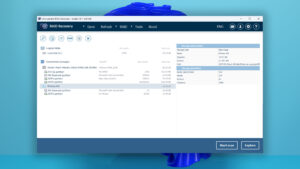
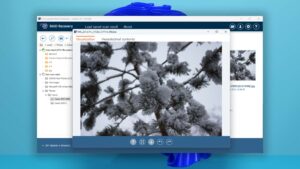
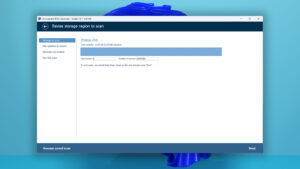
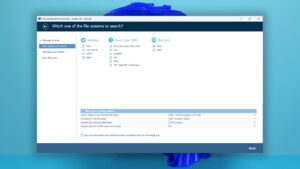
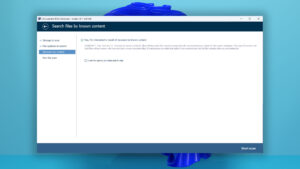
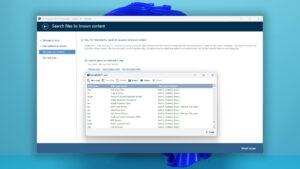
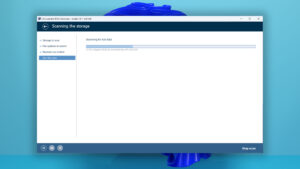
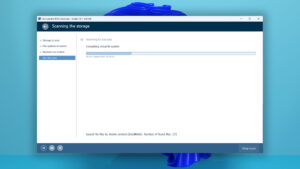
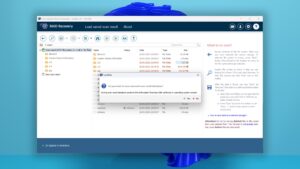
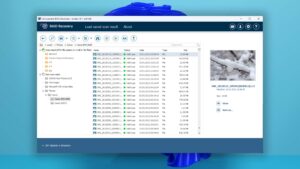
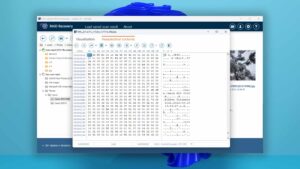
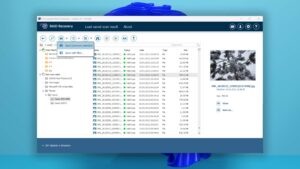
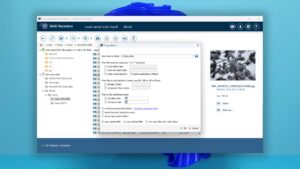
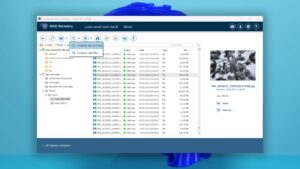
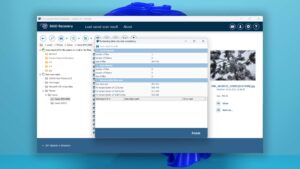
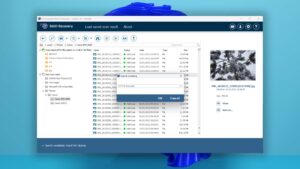
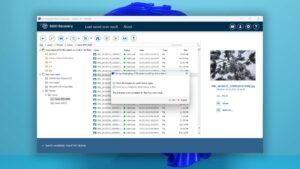
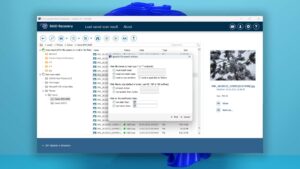
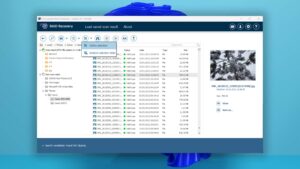
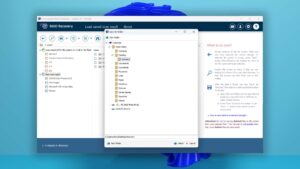
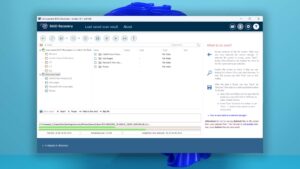
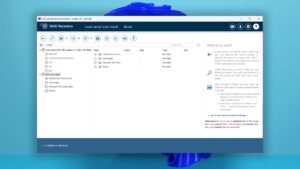
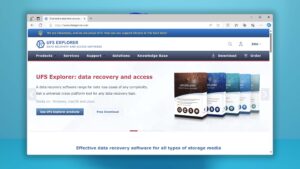
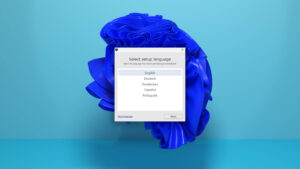
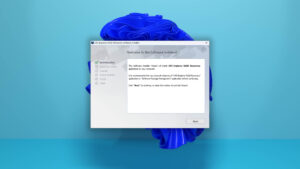
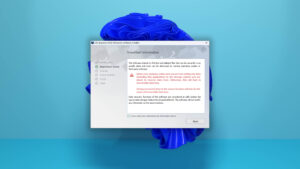
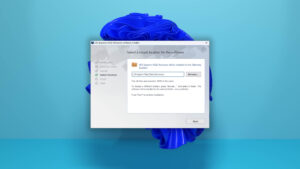
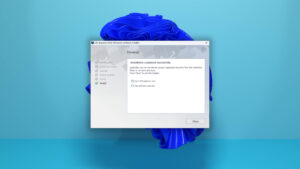
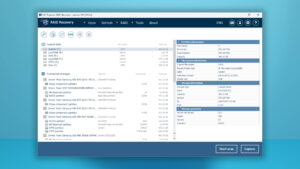
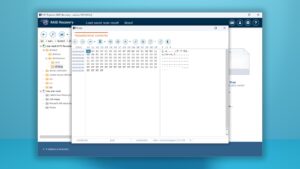
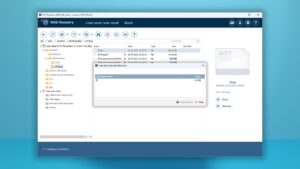
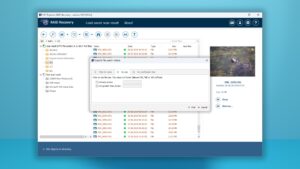
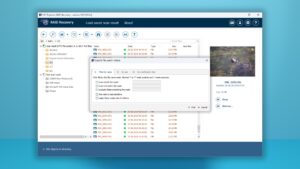
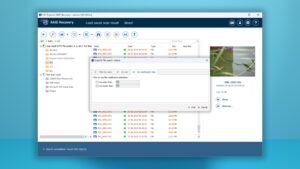

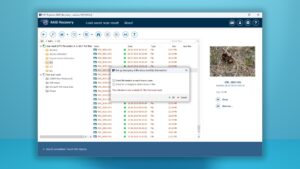
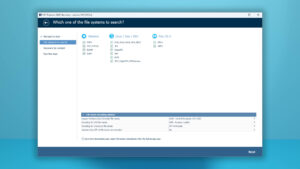

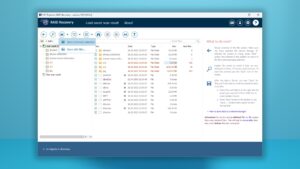
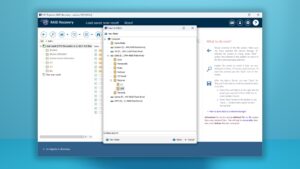
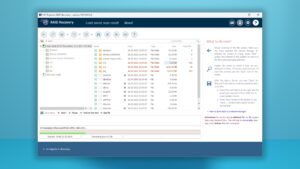
What Users Say about UFS Explorer for Windows